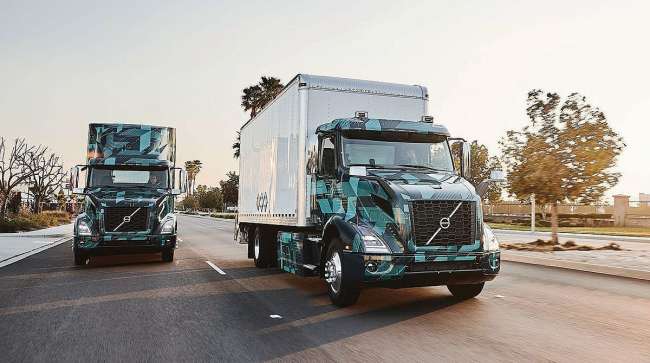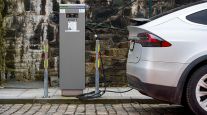Staff Reporter
Proposed EPA Standards Are Toughest Ever for Heavy Trucks

[Stay on top of transportation news: Get TTNews in your inbox.]
The Environmental Protection Agency has proposed its most aggressive emission mandates for cars and heavy trucks while seeking input about how to achieve its plans since the technology, infrastructure and energy cannot fully support national adoption of zero-emission vehicles.
EPA proposals contained requirements for Phase 3 standards in the EPA’s Clean Trucks Plan for heavy trucks and another for light- and medium-duty vehicles.
“By proposing the most ambitious pollution standards ever for cars and trucks, we are delivering on the Biden-Harris administration’s promise to protect people and the planet, securing critical reductions in dangerous air and climate pollution and ensuring significant economic benefits like lower fuel and maintenance costs for families,” EPA Administrator Michael Regan announced April 12.
Its “Multi-Pollutant Emissions Standards for Model Years 2027 and Later Light-Duty and Medium Duty Vehicles” will build on existing emissions standards for passenger cars and light trucks for model years (MY) 2023 to 2026. The proposal allows manufacturers to meet EPA standards “however works best for their vehicle fleets,” the agency noted. “Depending on the compliance pathways manufacturers select to meet the standards, EPA projects that EVs could account for 67% of new light-duty vehicle sales and 46% of new medium-duty vehicle sales in MY 2032.”
President Biden and the @EPA are driving towards a clean transportation future with new proposed vehicle emissions standards for models 2027 and beyond.
These standards would reduce climate pollution, lower costs for families, and reduce dependence on foreign oil. https://t.co/jHc3eVyc98 — The White House (@WhiteHouse) April 12, 2023
The 717-page “Greenhouse Gas Standards for Heavy-Duty Vehicles — Phase 3” notice of proposed rulemaking applies to trucks that haul freight and other heavy-duty vehicles (delivery trucks, refuse haulers or dump trucks). “These standards would complement the criteria pollutant standards for MY 2027 and beyond heavy-duty vehicles that EPA finalized in December 2022.” EPA is seeking to lower truck emissions by as much as 60% in 2045.
EPA is proposing staggered time frames for cleaner heavy trucks because of the nascent current development of EVs and fuel cell vehicles, including battery component sourcing, unknown electrical grid demands, uncertain electricity cost structures and lack of a cohesive national EV charging network.
“We also note that the hydrogen infrastructure is expected to need additional time to further develop, but we expect the refueling needs can be met by MY 2030,” EPA stated. “We also recognize the impact regulations can have on technology and recharging/refueling infrastructure development and deployment. Thus we request comment and data on our proposed adoption rate, including schedule and methods.”
EPA is requesting comments and data on numerous aspects of its proposals. A public hearing is slated for May 2 or 3, with another possible May 4 depending how many people want to testify.

Spear
Chris Spear, president of American Trucking Associations, said the trucking industry also wants to lower emissions and improve fuel efficiency, but “any regulation must be practical, achievable and based on sound science.”
“While these standards are directed at manufacturers, it is fleets — the customers and end-users of this equipment — who will ultimately determine their level of success. The Phase 3 standards must take into account the complex challenges and operating conditions facing motor carriers as we manage the transition to a zero-emission future while simultaneously moving more than 72% of the economy’s freight,” Spear said.
He said ATA will remain engaged in the regulatory process to ensure EPA arrives at a regulation with realistic equipment adoption timelines, is technologically feasible and does not result in additional inflationary pressures on the trucking industry.
Not only do the EPA’s Phase 3 standards set new emissions standards for heavy trucks (from MY 2028 to 2032), but they also revise previously agreed standards for many MY 2027 heavy trucks.
As with the other vehicles, EPA does not mandate heavy-truck manufacturers use a specific technology, but expects compliant fleets to have EVs and fuel-cell vehicles. “In developing the proposed standards, EPA has considered the key issues associated with growth in penetration of zero-emission vehicles, including charging infrastructure and hydrogen production.”
#AutoInnovators CEO John Bozzella’s reaction to EPA’s proposed light-duty vehicle GHG rules for MY 2027–2032 → https://t.co/y4ZiiUCs2l
“Remember this: a lot has to go right for this massive—and unprecedented—change in our automotive market and industrial base to succeed…” #EVs — Alliance for Automotive Innovation (@autosinnovate) April 12, 2023
John Bozzella, CEO of the Alliance for Automotive Innovation, acknowledged in a statement April 12 there are now 91 EV models across all market segments and EVs achieved 10% of all new vehicle sales in December, but raised questions about EPA’s proposal now exceeding the Biden administration’s 50% electrification target (in Executive Order 14037) from 2021 “by requiring more than one EV for every new gas vehicle sold by 2030 and potentially two EVs for every gas vehicle just two years later.”
Want more news? Listen to today's daily briefing above or go here for more info
The ultimate success of EPA’s proposed standards, Bozzella said, depend on factors outside the control of vehicle manufacturers, such as charging infrastructure, supply chains, grid resiliency and the availability of low-carbon fuels and critical minerals.
“Remember this: a lot has to go right for this massive — and unprecedented — change in our automotive market and industrial base to succeed, especially as 284 million light-duty vehicles across the country (that average 12 years in age) remain on the roads,” he said. “As of last year, EVs accounted for just over 1% of all light-duty vehicles.”




